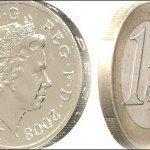 Friday’s trade saw EUR/USD within the range of 1.0993-1.1142. The pair closed at 1.1018, plummeting 0.79% on a daily basis, while marking its third consecutive trading day of losses. The daily low has been the lowest level since August 11th, when the cross registered a low of 1.0959. In weekly terms, EUR/USD plunged 2.89% last week, or at the sharpest rate since the week ended on July 19th, when the pair lost 2.99%.
Friday’s trade saw EUR/USD within the range of 1.0993-1.1142. The pair closed at 1.1018, plummeting 0.79% on a daily basis, while marking its third consecutive trading day of losses. The daily low has been the lowest level since August 11th, when the cross registered a low of 1.0959. In weekly terms, EUR/USD plunged 2.89% last week, or at the sharpest rate since the week ended on July 19th, when the pair lost 2.99%.
At 7:47 GMT today EUR/USD was up 0.25% for the day to trade at 1.1045. The pair is about to test the upper range breakout (R4), as it touched a daily high at 1.1048 at 7:49 GMT.
Today the cross may be influenced by a number of macroeconomic reports as listed below.
Fundamentals
Euro area
German IFO Business Climate
Business climate in Germany probably remained unchanged in October, with the respective gauge remaining at 108.5, according to market expectations. It has been the highest level since May, when a reading of 108.5 was reported as well. In August the gauge for business climate stood at 108.3.
The IFO Business Climate Index reflects entrepreneurs’ sentiment in regard to current business situation and their expectations for the next six months. The index is based on a survey, conducted by phone and encompasses 7 000 companies, which operate in sectors such as manufacturing, construction, wholesaling and retailing industry. The Business Climate Balance represents the difference between the percentage share of respondents that are optimistic and the share of respondents that are pessimistic. The balance can fluctuate between -100, which suggests all responding companies assess their situation as poor and expect business conditions to deteriorate, and +100, which suggests all responding companies assess their situation as good and expect an improvement in business conditions. In order to calculate the IFO Business Climate Index, the Balance is normalized to the average of a base year, which currently is 2005.
The IFO Business Climate Index is comprised by two equally-weighted sub-indexes – a gauge of expectations and a gauge of current assessment. The IFO expectations index probably slipped to 102.5 in October from 103.3 in September. The latter has been the highest index level since April 2015, when a value of 103.5 was registered. The IFO current assessment index probably dropped for a second straight month in October, falling to 113.5. In September it stood at 114.0.
In case the Business Climate Index exceeded expectations in October, this would have a moderate bullish effect on the single currency. The CESifo Group is expected to release the official numbers at 9:00 GMT.
United States
New Home Sales
Sales of new single-family homes probably fell to the seasonally adjusted annual rate of 550 000 in September, according to market expectations, from 552 000 reported in August. The latter has been the highest level of sales since February 2008, when a figure of 575 000 was reported. Sales in the Northeast went up 24.1% in August, those in the South were up 7.4%, while sales in the West increased 5.4%. On the other hand, new home sales in the Midwest were 9.1% lower in August compared to a month ago.
The median sales price of new houses sold was USD 292 700 in August, while the average sales price was USD 353 400. At the end of the month, the seasonally adjusted estimate of new houses for sale was 216 000, which represents a supply of 4.7 months at the current sales rate, according to the report by the US Census Bureau.
This report has a significant influence on the Foreign Exchange market, because increasing new home sales can lead to a rise in consumption, for example. The new home sales index is also an excellent indicator of any economic downturns or upturns due to the sensitivity of consumers income. When, for instance, new home sales drop over several months, this usually is a precursor to an economic depression.
In case a lower-than-expected level of sales is reported, this would have a strong bullish impact on the US dollar. The Census Bureau is to report the official figure at 15:00 GMT.
Correlation with other Majors
Taking into account the week ended on October 25th and the daily closing levels of the major currency pairs, we come to the following conclusions in regard to the strength of relationship:
EUR/USD to GBP/USD (0.8987, or very strong)
EUR/USD to AUD/USD (0.6164, or strong)
EUR/USD to NZD/USD (-0.2849, or moderate)
EUR/USD to USD/CAD (-0.6233, or strong)
EUR/USD to USD/JPY (-0.9567, or very strong)
EUR/USD to USD/CHF (-0.9902, or very strong)
1. During the examined period EUR/USD moved almost equally in one and the same direction with GBP/USD, while moving almost equally in the opposite direction compared to USD/JPY and USD/CHF. The correlation between EUR/USD and USD/CHF was almost perfect.
2. EUR/USD moved strongly in one and the same direction with AUD/USD during the past week, while moving strongly in the opposite direction compared to USD/CAD.
Bond Yield Spread
The yield on German 2-year government bonds went as high as -0.301% on October 23rd, after which it slid to -0.313% at the close to remain unchanged in comparison with October 22nd.
The yield on US 2-year government bonds climbed as high as 0.645% on October 23rd, or the highest level since October 9th (0.657%), after which it closed at the exact same level to add 4 basis points (0.04 percentage point) compared to October 22nd. It has been the first increase in the past three trading days.
The spread between 2-year US and 2-year German bond yields, which reflects the flow of funds in a short term, expanded to 0.958% on October 23rd from 0.918% on October 22nd. The October 23rd yield spread has been the largest one since September 16th, when the difference was 1.018%.
Meanwhile, the yield on German 10-year government bonds soared as high as 0.531% on October 23rd, after which it slid to 0.508% at the close to add 0.005 percentage point compared to October 22nd. It has been the first gain in the past three trading days.
The yield on US 10-year government bonds climbed as high as 2.099% on October 23rd, or the highest level since October 9th (2.138%), after which it slipped to 2.087% at the close to add 5.9 basis points (0.059 percentage point) compared to October 22nd. It has been the first gain in the past three trading days.
The spread between 10-year US and 10-year German bond yields widened to 1.579% on October 23rd from 1.525% on October 22nd. The October 23rd yield difference has been the largest one since August 4th, when the spread was 1.587%.
Daily and Weekly Pivot Levels
By employing the Camarilla calculation method, the daily pivot levels for EUR/USD are presented as follows:
R1 – 1.1032
R2 – 1.1045
R3 (range resistance) – 1.1059
R4 (range breakout) – 1.1100
S1 – 1.1004
S2 – 1.0991
S3 (range support) – 1.0977
S4 (range breakout) – 1.0936
By using the traditional method of calculation, the weekly pivot levels for EUR/USD are presented as follows:
Central Pivot Point – 1.1133
R1 – 1.1274
R2 – 1.1529
R3 – 1.1670
S1 – 1.0878
S2 – 1.0737
S3 – 1.0482





